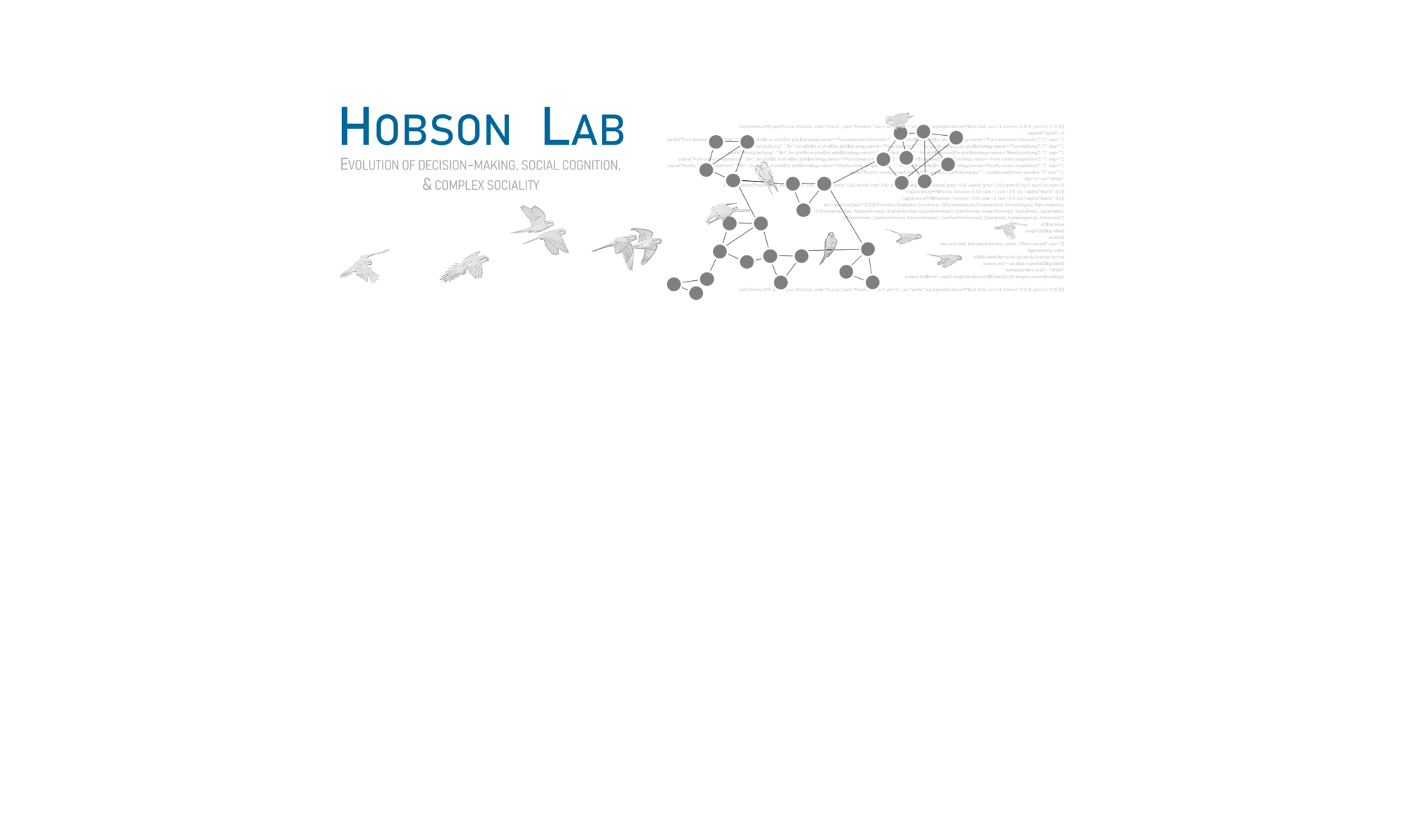My paper with Dave McDonald was published in the special issue Animal Behaviour, Social Networks (full text). We developed new metrics for weighted social network analyses that were inspired by methods used in population genetics. Our new metrics focus on variance in the strength of relationships, and allow for comparison across different social scales. We apply these metrics to existing data (from long-tailed manakins, mountain goats, and monk parakeets) to show how our new measures can be used to gain new insight into the structure of social groups.
From the forth-coming SFI Parallax newsletter:
Somewhere between million-node social media networks and the dozen nodes of a wolf pack, there’s a little-explored sphere of social experience. In their recent Animal Behaviour paper, SFI-ASU Postdoctoral Fellow Elizabeth Hobson and co-author David McDonald (University of Wyoming) developed network analysis tools to explore how relationship strengths vary across micro, meso, and macro levels of animal sociality – for example, between an individual and its community, or between a community of individuals and the social network of the entire group. The new tools, adapted from population genetics, could allow researchers to understand whether differences in social environments experienced by a particular animal are the result of individual quirks or are general characteristics of the social organization. The authors successfully applied their metrics to data from three known animal social networks and discussed how their innovation offers a quantitative method to study disease transmission, social complexity, and the flow of information in animal social networks.



